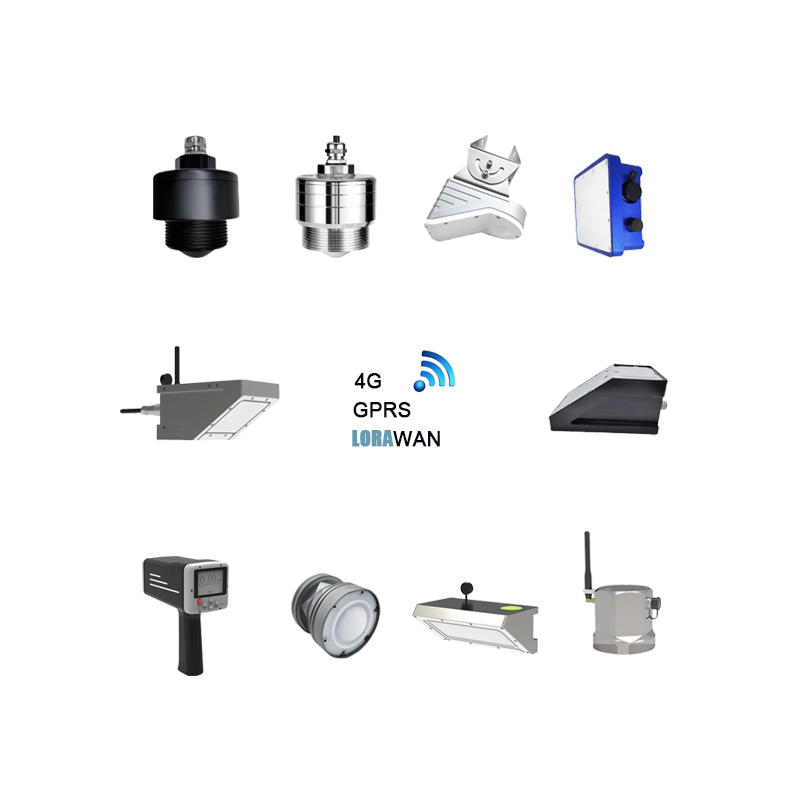As in arsjipelnaasje steane de Filipinen foar ferskate útdagings op it mêd fan wetterboarnenbehear, ynklusyf drinkwetterfersmoarging, algebloei en efterútgong fan 'e wetterkwaliteit nei natuerrampen. Yn 'e ôfrûne jierren, mei foarútgong yn sensortechnology, hawwe wettertroebelheidssensors in hieltyd wichtiger rol spile yn 'e monitoring en it bestjoer fan it wettermiljeu fan it lân. Dit artikel analysearret systematysk praktyske tapassingsgefallen fan troebelheidssensors yn 'e Filipinen, ynklusyf har spesifike gebrûk yn 'e monitoring fan wettersuveringsynstallaasjes, it behear fan maralgen, ôffalwettersuvering en needhelp by rampen. It ûndersiket de ynfloed fan dizze technologyske tapassingen op it behear fan wetterkwaliteit, folkssûnens, miljeubeskerming en ekonomyske ûntwikkeling yn 'e Filipinen, wylst it ek takomstige trends en útdagings sketst. Troch de praktyske ûnderfining fan troebelheidssensortapassingen yn 'e Filipinen te besjen, kinne weardefolle referinsjes wurde levere foar oare ûntwikkelingslannen by it oannimmen fan technologyen foar wetterkwaliteitsmonitoring.
Eftergrûn en útdagings fan wetterkwaliteitsmonitoring yn 'e Filipinen
De Filipinen, in arsjipellân yn Súdeast-Aazje dat bestiet út mear as 7.000 eilannen, stiet foar unike útdagings op it mêd fan wetterbehear fanwegen syn ûnderskate geografyske omjouwing. Mei in gemiddelde jierlikse delslach fan 2.348 mm hat it lân in oerfloed oan wetterboarnen. Uneven ferdieling, ûnfoldwaande ynfrastruktuer en slimme fersmoargingsproblemen litte in wichtich diel fan 'e befolking lykwols sûnder tagong ta feilich drinkwetter. Neffens de Wrâldsûnensorganisaasje hawwe sawat 8 miljoen Filipino's gjin feilich drinkwetter, wêrtroch't wetterkwaliteit in kritysk probleem foar de folkssûnens is.
Problemen mei wetterkwaliteit yn 'e Filipinen manifestearje har benammen op de folgjende manieren: slimme wetterfersmoarging fan boarnen, benammen yn tichtbefolke gebieten lykas Metro Manila, dêr't yndustrieel ôffalwetter, húshâldlik rioelwetter en lânbouôfwettering liede ta eutrofiaasje; faak algebloei yn grutte wetterlichems lykas Laguna Lake, dy't net allinich ûnnoflike geuren produsearje, mar ek skealike algtoksinen frijlitte; swiere metalenfersmoarging yn yndustriële sônes, mei ferhege nivo's fan kadmium (Cd), lead (Pb) en koper (Cu) ûntdutsen yn 'e Baai fan Manila; en efterútgong fan 'e wetterkwaliteit nei rampen troch faak tyfoanen en oerstreamingen.
Tradisjonele metoaden foar it kontrolearjen fan wetterkwaliteit hawwe te krijen mei ferskate ymplemintaasjebarriêres yn 'e Filipinen: laboratoariumanalyse is djoer en tiidslinend, wêrtroch real-time monitoring lestich is; hânmjittige sampling wurdt beheind troch de komplekse geografy fan it lân, wêrtroch in protte ôfgelegen gebieten ûntbleate binne; en fragmintearre gegevensbehear oer ferskate ynstânsjes hinderet wiidweidige analyze. Dizze faktoaren behinderje mei-inoar effektive antwurden op útdagings op it mêd fan wetterkwaliteit.
Tsjin dizze eftergrûn hawwe wettertroebelheidssensors traksje krigen as effisjinte, real-time monitoring-ark. Troebelheid, in wichtige yndikator fan swevende dieltsjes yn wetter, beynfloedet net allinich de estetyske kwaliteit fan wetter, mar is ek nau ferbûn mei de oanwêzigens fan patogenen en konsintraasjes fan gemyske fersmoarging. Moderne troebelheidssensors wurkje neffens it fersprate ljochtprinsipe: as in ljochtstriel troch in wettermonster giet, ferspriede swevende dieltsjes it ljocht, en de sensor mjit de yntensiteit fan fersprate ljocht loodrecht op 'e ynfallende striel, en fergeliket it mei ynterne kalibraasjewearden om troebelheid te bepalen. Dizze technology biedt rappe mjittingen, krekte resultaten en trochgeande monitoringmooglikheden, wêrtroch it benammen geskikt is foar de wetterkwaliteitsmonitoringbehoeften fan 'e Filipinen.
Resinte foarútgong yn IoT-technology en draadloze sensornetwurken hawwe de tapassingsscenario's fan troebelheidssensors yn 'e Filipinen útwreide, fan tradisjonele wettersuveringsynstallaasjemonitoring oant marrenbehear, ôffalwettersuvering en needreaksje. Dizze ynnovaasjes transformearje de oanpakken foar wetterkwaliteitsbehear en biede nije oplossingen foar lang besteande útdagings.
Technologysk oersjoch fan troebelheidssensors en har geskiktheid yn 'e Filipinen
Troebelheidssensors, as kearnapparatuer yn wetterkwaliteitsmonitoring, fertrouwe op har technyske prinsipes en prestaasjekarakteristiken om betrouberens yn komplekse omjouwings te garandearjen. Moderne troebelheidssensors brûke benammen optyske mjitprinsipes, ynklusyf ferspraat ljocht, trochljochte ljocht en ferhâldingsmetoaden, wêrby't ferspraat ljocht de mainstreamtechnology is fanwegen syn hege presyzje en stabiliteit. As in ljochtstriel troch in wettermonster giet, ferspriede ophongen dieltsjes it ljocht, en de sensor detektearret de yntensiteit fan ferspraat ljocht ûnder in spesifike hoeke (meastentiids 90°) om troebelheid te bepalen. Dizze kontaktleaze mjitmetoade foarkomt fersmoarging fan elektroden, wêrtroch't it geskikt is foar lange-termyn online monitoring.
Wichtige prestaasjeparameters fan troebelheidssensors omfetsje mjitberik (typysk 0–2.000 NTU of breder), resolúsje (oant 0,1 NTU), krektens (±1%–5%), reaksjetiid, temperatuerkompensaasjeberik en beskermingsklasse. Yn it tropyske klimaat fan 'e Filipinen is miljeu-oanpasberens benammen wichtich, ynklusyf hege temperatuerresistinsje (wurkberik fan 0–50 °C), hege beskermingsklasse (IP68 wetterdichtheid) en anti-biofouling-mooglikheden. Resinte high-end sensoren omfetsje ek automatyske skjinmeitsfunksjes mei meganyske boarstels of ultrasone technology om de ûnderhâldsfrekwinsje te ferminderjen.
Troebelheidssensors binne unyk geskikt foar de Filipinen fanwegen ferskate technyske oanpassingen: de wetterlichems fan it lân litte faak hege troebelheid sjen, foaral yn reinseizoenen as de oerflakteôfwettering tanimt, wêrtroch real-time monitoring essensjeel is; ynstabile stroomfoarsjenning yn ôfgelegen gebieten wurdt oanpakt troch sensoren mei leech fermogen (<0,5 W) dy't kinne wurkje op sinne-enerzjy; en de geografy fan 'e arsjipel makket draadloze kommunikaasjeprotokollen (bygelyks RS485 Modbus/RTU, LoRaWAN) ideaal foar ferspraat monitoringnetwurken.
Yn 'e Filipinen wurde troebelheidssensors faak kombineare mei oare wetterkwaliteitsparameters om multi-parameter wetterkwaliteitsmonitoringsystemen te foarmjen. Mienskiplike parameters omfetsje pH, oploste soerstof (DO), konduktiviteit, temperatuer en ammoniakstikstof, dy't tegearre in wiidweidige wetterkwaliteitsbeoardieling leverje. Bygelyks, by algenmonitoring ferbetteret it kombinearjen fan troebelheidsgegevens mei chlorofylfluoreszinsjewearden de krektens fan algebloeideteksje; by ôffalwettersuvering optimalisearret troebelheids- en gemyske soerstoffraach (COD) korrelaasjeanalyse behannelingsprosessen. Dizze yntegreare oanpak ferbetteret de effisjinsje fan monitoring en ferminderet de totale ynsetkosten.
Technologyske trends jouwe oan dat tapassingen fan troebelheidssensors yn 'e Filipinen har rjochtsje op yntelliginte en netwurke systemen. Sensoren fan 'e nije generaasje omfetsje edge computing foar lokale gegevensferwurking en anomaliedeteksje, wylst wolkplatfoarms tagong ta en dielen fan gegevens op ôfstân mooglik meitsje fia PC's en mobile apparaten. Bygelyks, it Sunlight Smart Cloud-platfoarm makket 24/7 wolkbasearre monitoring en opslach mooglik, wêrtroch brûkers tagong hawwe ta histoaryske gegevens sûnder trochgeande ferbining. Dizze foarútgong leveret krêftige ark foar wetterboarnebehear, benammen by it oanpakken fan hommelse wetterkwaliteitsbarrens en lange-termyn trendanalyse.
Nim dan kontakt op mei Honde Technology Co., LTD.
Email: info@hondetech.com
Bedriuwswebside:www.hondetechco.com
Tel: +86-15210548582
Pleatsingstiid: 20 juny 2025


